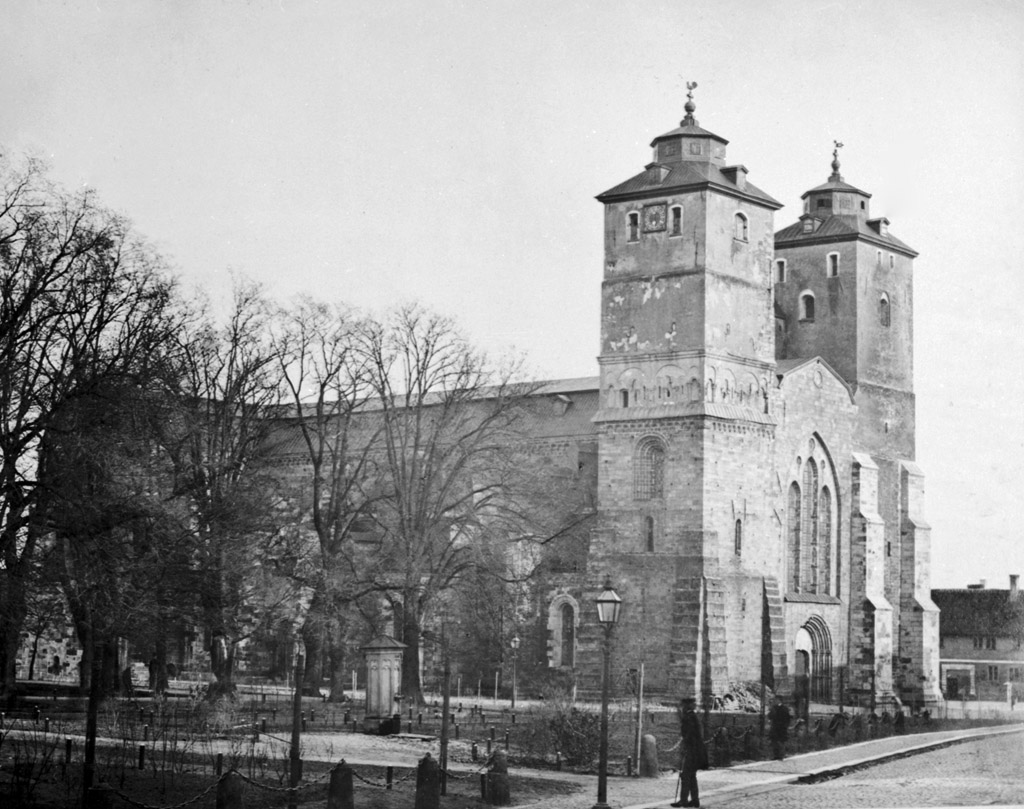|
Biskop Eskil
Eskil was a 12th-century Archbishop of Lund, in Skåne, Denmark (now in Sweden). He was one of the most capable and prominent princes of the Church in Scandinavia. A man of profound piety, he was always zealous for the welfare of the church, and was a courageous and unselfish defender of the rights of the hierarchy in its struggle against the civil power and clerical usurpers. Biography Eskil was born about 1100. His father Christian was descended from an illustrious dynastic family of Jutland and was related to several royal families. When twelve years of age the young Eskil was received into the renowned cathedral school at Hildesheim. Here, during a dangerous illness, he was allegedly honoured by a vision of the Mother of God, who, chiding him with his frivolous conduct, saved him from imminent perdition and restored his health, demanding five measures of different varieties of corn as a thank-offering. This vision was interpreted to mean that Eskil would attain high ecclesias ... [...More Info...] [...Related Items...] OR: [Wikipedia] [Google] [Baidu] |
Archbishop Of Lund
List of (arch)bishops of Lund. Until the Danish Reformation the centre of a great Latin (arch)bishopric, Lund has been in Sweden since the Treaty of Roskilde in 1658. The Diocese of Lund is now one of thirteen in the Church of Sweden. Catholic Episcopate ''(all Roman Rite; some dates disputed according to the source) ;''Suffragan Bishops of Lund'' * Henrik (1060–1065? or 1048? – death 1060.08.21) * Egino (1065? – death 1072.10.19); ?former bishop of Dalby * Ricwald (1072?1075 – death 1089.05.26) * Ascer (1089–1103 ''see below'') ;''Metropolitan Archbishops of Lund'' * Ascer (''see above'' 1103 – death 1137.05.05) * Eskil (1138?1137–1177?1179) * Absalon Hvide (1177?1179 – death 1201.03.21) * Andreas Sunesen (1201–1222?1223) * Peder Saxesen (1224.01.11 – death 1228.07.11) * Uffe Thrugotsen (1228?1230 – death 1252.12.15) * Jakob Erlandsen (1253.08.13 – death 1274.02.18) * Trugot Torstensen (1276?1277.01.13 – death 1280.05.02) * Jens Dros (12 ... [...More Info...] [...Related Items...] OR: [Wikipedia] [Google] [Baidu] |
Metropolitan See Of Trondhjem
The Archdiocese of Nidaros (or Niðaróss) was the metropolitan see covering Norway in the later Middle Ages. The see was the Nidaros Cathedral, in the city of Nidaros (now Trondheim). The archdiocese existed from the middle of the twelfth century until the Protestant Reformation. History In Norway, the kings who introduced Christianity which first became known to the people during their martial expeditions. The work of Christianization begun by Haakon the Good (d. 961 in the Battle of Fitjar) was carried on by Olaf Tryggvason (d. 1000 in the Battle of Svolder) and Olaf Haraldsson (St. Olaf, d. 1030 in the Battle of Stiklestad). Both were converted Vikings, the former having been baptized at Andover, England, by Aelfeah, Bishop of Winchester, and the latter at Rouen by Archbishop Robert. In 997, Olaf Tryggvason founded at the mouth of the river Nidelva the city of Nidaros (now Trondheim) where he built a Kongsgård estate and a church; he laboured to spread Christianity in N ... [...More Info...] [...Related Items...] OR: [Wikipedia] [Google] [Baidu] |
Esrum Abbey
Esrum Abbey, also Esrom Abbey ( da, Esrum or ), was the second Cistercian The Cistercians, () officially the Order of Cistercians ( la, (Sacer) Ordo Cisterciensis, abbreviated as OCist or SOCist), are a Catholic religious order of monks and nuns that branched off from the Benedictines and follow the Rule of Saint ... monastery founded in Denmark, located near Hillerød in Region Hovedstaden, on the island of Zealand (Denmark), Zealand (Sjælland), on the north side of the Esrum Sø (Lake Esrum) near Esbønderup and Græsted. History Monastery Esrum Abbey began as a Order of St. Benedict, Benedictine foundation, perhaps in about 1140, and was built near a pre-Christian religious site, later called Esrum Spring, where a small wooden stave chapel may have existed before the abbey was established. The foundation was taken over by the Cistercians in 1151 on the authority of Archbishop Eskil of Lund, and was counted as a daughter house of Clairvaux Abbey, Clairvaux. E ... [...More Info...] [...Related Items...] OR: [Wikipedia] [Google] [Baidu] |


